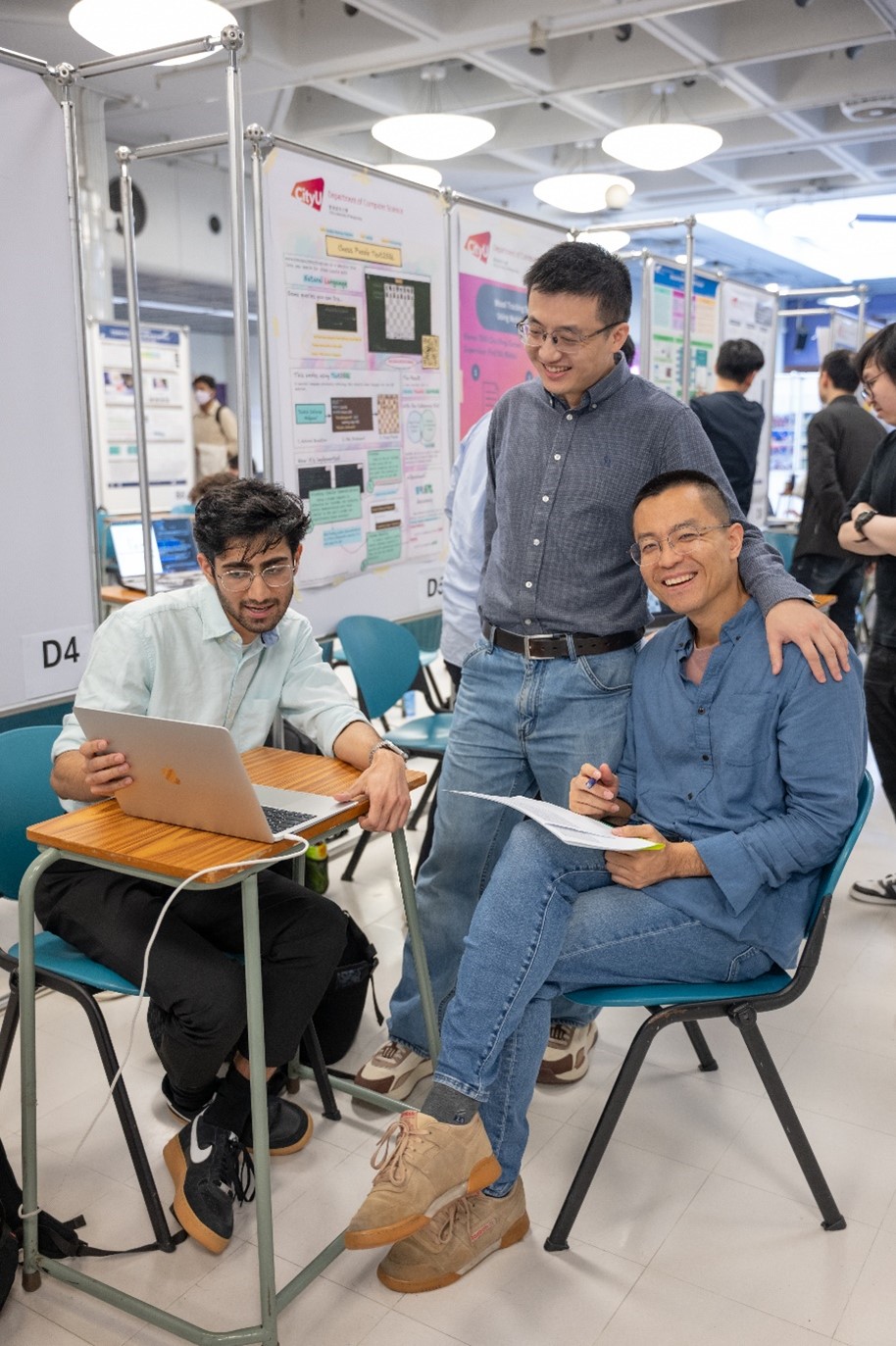
Computer Science
Final Year Project Showcase

Main navigation
- Programmes Overview
- BSc in Computer Science
- BSc in Cybersecurity
- Double Degree Programme
- Joint Bachelor's Degree Program
- Minor in Computing
- MSc in Artificial Intelligence
- MSc in Computer Science
- MSc in Cybersecurity
- MSc in Electronic Commerce
- Master of Philosophy / Doctor of Philosophy
- Student Exchange
- CS Course List
- Alumni Sharing
Final Year Project Showcase
Final Year Project Exhibition 2025
The Final Year Project (FYP) Exhibition was successfully held on 9 April 2025.
The event showcased the outstanding creativity, innovation, and research achievements of the graduating cohort. With a vibrant display of projects spanning multiple disciplines, attendees had the opportunity to engage with students and explore thought-provoking ideas at the forefront of their fields.




A highlight of the exhibition was the Best Poster Presentation Awards, celebrating excellence in both research content and visual communication. This year, five exceptional students were honored for their exemplary work: CABALLERO Rakichaz Calimbahin, HIRUNTEEYAKUL Maitree, HO Cheuk Hong, LI Hendry Wijaya, LUNG Lok Hin. Their posters captured the faculty’s attention for their clarity, originality, and impact, setting a high standard for future participants.
Best Poster Presentation Award Winners:
| Student Name: Supervisor: Project Title: |
CABALLERO Rakichaz Calimbahin Prof. MA Chen Chess Puzzle Text2SQL |
| Student Name: Supervisor: Project Title: |
HIRUNTEEYAKUL Maitree Prof. LUO Yuhan A BLE and UWB Beacon-Assist Framework for Multiuser Augmented Reality Synchronization Across Multiple Devices in Shared Environments |
| Student Name: Supervisor: Project Title: |
HO Cheuk Hong Prof. IP Ho Shing Horace Lip Reading Model in Cantonese |
| Student Name: Supervisor: Project Title: |
LI Hendry Wijaya Prof. LEUNG Wing Ho Howard CityU Metaverse - Integrate and Expand Metaverse from User Content Contribution |
| Student Name: Supervisor: Project Title: |
LUNG Lok Hin Prof. LEUNG Wing Ho Howard 3D Object and Scene Creation for Metaverse |
FYP Poster of CABALLERO Rakichaz Calimbahin:

FYP Poster of HIRUNTEEYAKUL Maitree:

FYP Poster of HO Cheuk Hong:

FYP Poster of LI Hendry Wijaya

FYP Poster of LUNG Lok Hin:

Congratulations to all the winners of the Best Poster Presentation Award, and heartfelt appreciation to their FYP supervisors: Prof. IP Ho Shing Horace, Prof. LEUNG Wing Ho Howard, Prof. LUO Yuhan, and Prof. MA Chen!